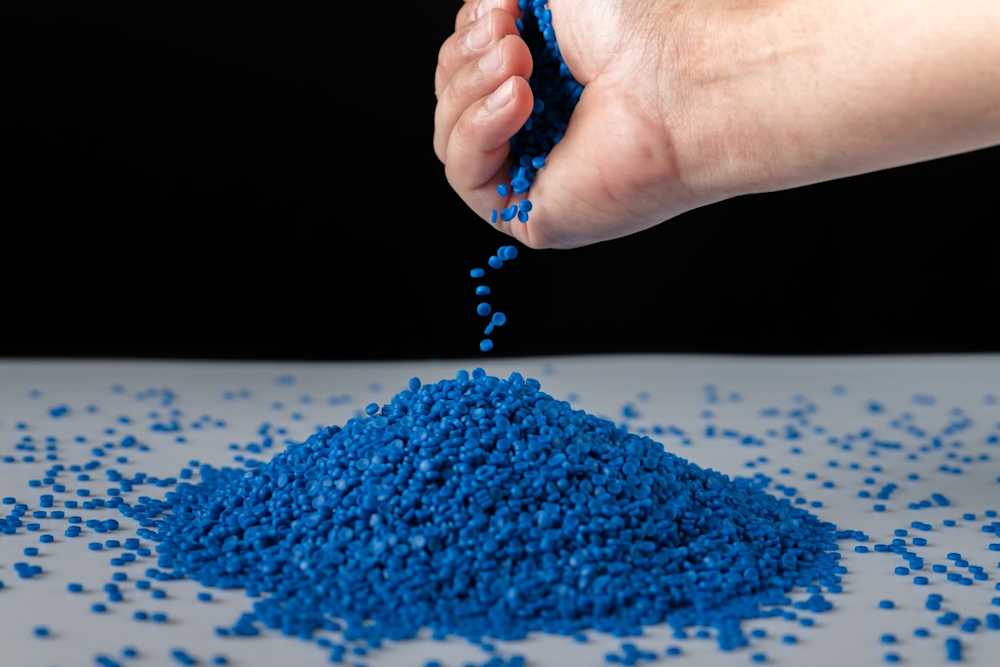Concerns about the accumulation of microplastics in the environment and their impact on human health have prompted the EU to propose several measures to restrict their use and formation from larger plastics. The most notable recent change is Commission Regulation (EU) 2023/2055, which adds microplastics to the REACH Regulation as a restricted substance, prohibiting their intentional use in most products and materials after transitional periods come to an end.1
The need to limit microplastic pollution is also mentioned in several other pieces of EU legislation, including the revised Drinking Water Directive, the new Construction Products Regulation, and the Packaging and Packaging Waste Regulation (PPWR). As of April 2025, these regulations do not impose binding microplastic testing requirements on companies, but such obligations are expected to be introduced in the upcoming years.
EU definition of microplastics
In the REACH restriction, microplastics – or synthetic polymer microparticles – are defined as solid polymers with maximum dimensions equal to or smaller than 5 mm, or length equal to or smaller than 15 mm in the case of fiber-like particles with a length-to-diameter ratio greater than three.
Microplastics can be manufactured deliberately, such as for exfoliating beads in cosmetics, or they can form unintentionally when larger pieces of plastic break down. Only those microplastics intentionally added to products, also known as primary microplastics, are targeted by the REACH restriction. While secondary microplastics are not covered, the EU is working to target them under its Plastics Strategy and Circular Economy Action Plan.2
Summary of the REACH amendment on microplastics
Commission Regulation (EU) 2023/2055 amends the REACH Regulation by prohibiting the sale of microplastics and products to which microplastics have been added. Materials subject to the restriction must not contain synthetic polymer microparticles in concentrations greater than 0.01% by weight.
Some of the industries affected by the ban include sports, beauty, health, agriculture, and construction materials. The first measures, including a prohibition of loose glitter and microbeads, entered into force on the 17th of October 2023. Other sales bans will take effect gradually to give companies the time to react and switch to alternatives.
Timeline and products affected
As derogation periods are set in years from the amendment’s entry into force, new microplastic restrictions under REACH will always become applicable on the 17th of October of a given year. The ban will be enforced on the following product groups in the following years:
2023: Loose glitter and microbeads in product groups transitional periods do not apply to
2027: Rinse-off cosmetics
2028: Fertilizers, detergents, waxes, polishes, air care products, and miscellaneous agricultural and horticultural products
2029: Fragrances, leave-on cosmetics, and medical devices as defined by the EU MDR
2031: Plant protection products, granular infill used on synthetic sports surfaces
2035: Lip, nail, and other make-up products
Several product groups are exempted from the ban. These include some in vitro medical devices, food additives, medicinal products, and microplastics used at industrial sites.
Laboratory testing can be conducted to show that products do not contain microplastic particles in quantities exceeding the 0.01% by weight threshold. Another way to demonstrate compliance with the ban is to show that plastic particles are soluble or biodegradable in soil, sediment, or aqueous conditions.3
Other EU regulations on microplastics
The REACH restriction only applies to the intentional use of synthetic polymer microparticles, but EU regulators are also working on secondary microplastics. One of the first concrete measures is an October 2023 proposal for a regulation on plastic pellet losses during handling and transportation. Once passed, it will impose stricter packaging requirements and risk management obligations, especially for companies that handle large quantities of pellets annually.4
Several other EU directives and regulations also propose measures to limit microplastic pollution. These include:
New Drinking Water Directive: The Commission intends to add microplastics to a watch list of substances to be monitored under the directive. Upon addition, a guidance value will be introduced, and if it is exceeded, water suppliers will need to take action to reduce microplastic concentrations. A measuring methodology has already been established by Delegated Decision (EU) 2024/1441.5
Packaging and Packaging Waste Regulation (PPWR): Article 5 of the regulation requires manufacturers to consider and seek to minimize the environmental impact of microplastics when producing packaging.6 More concrete obligations or compliance criteria have not yet been specified.
New Construction Products Regulation (CPR): According to Annex I to the new CPR, construction works must not result in microplastic emissions that pose risks to human health or the environment.7 The implementation of this high-level goal will depend on the development of harmonized standards and technical specifications, which set the specific performance requirements for construction products in the EU.
Microplastics analysis according to EU regulations
Measurlabs offers microplastic testing for nearly all types of materials, products, and environmental samples, helping companies ensure compliance with the REACH microplastic ban and other current and future regulations. Analyses can be conducted using several techniques, such as µRaman, µFTIR, and py-GC/MS. Internationally recognized testing standards, including ISO 24187 and ISO 16094, are followed where applicable.
Recently, we entered into a partnership with German sustainability label flustix to offer microplastic-free certification for products that meet the REACH restriction criteria for the absence of intentionally added microplastics. Do not hesitate to ask for more information on the certificate when requesting a quote for testing services.
References:
1 Regulation (EU) 2023/2055 amending the REACH Regulation as regards synthetic polymer microparticles.
2 EU Plastics Strategy and new Circular Economy Action Plan.
3 The rules and criteria for biodegradability and solubility testing are outlined in Appendix 15, added to REACH by Regulation (EU) 2023/2055.
4 The European Council and Parliament reached a provisional agreement on the regulation on plastic pellet losses in April 2025.
5 Directive (EU) 2020/2184 on the quality of water intended for human consumption. Article 13 (8) specifies the intention to add microplastics to the watch list.
6 Regulation (EU) 2025/40 on packaging and packaging waste.
7 Regulation (EU) 2024/3110 laying down harmonised rules for the marketing of construction products.

